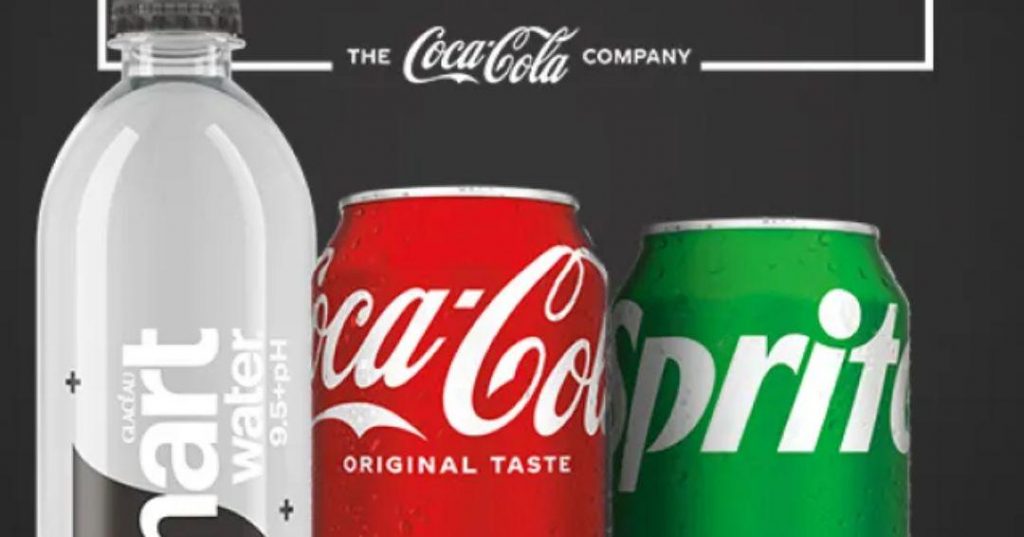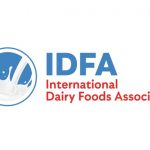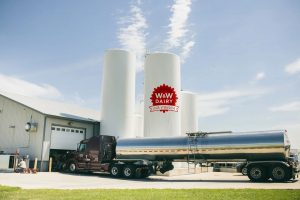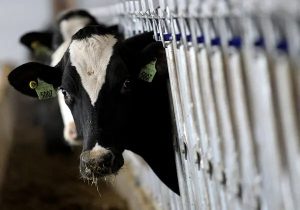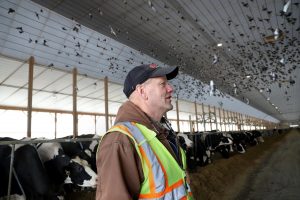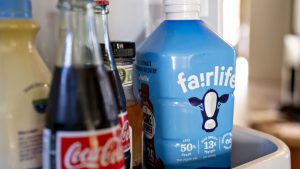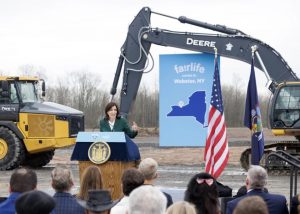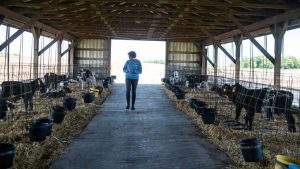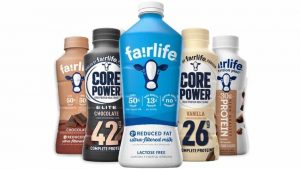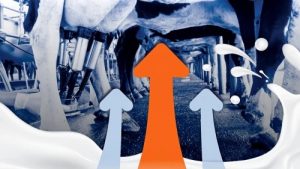
Fairlife filters its milk to boost protein, reduce sugar by half and eliminate lactose, while also, according to fans, being creamier. That’s helped it become Coke’s fastest-growing US brand and crucial to its growth strategy of moving beyond soda.
When walking into Coca-Cola’s office in Chicago’s trendy West Loop, the soda giant’s iconic logo is noticeably absent. In its place is a giant cowbell.
Inside, a handful of the 900 employees — dubbed “super tasters” — hone and closely guard one of the soda giant’s most valuable formulas. But these workers aren’t sipping Coke or Sprite. They’re drinking milk.
And not the regular white stuff. Fairlife filters its milk to boost protein, reduce sugar by half and eliminate lactose, while also, according to fans, being creamier. That’s helped it become Coke’s fastest-growing US brand and crucial to its growth strategy of moving beyond soda.
“Fairlife has blossomed into a great business,” said Chief Executive Officer James Quincey, a 60-year-old Brit who’s been at the helm for close to eight years.
Since becoming CEO, Quincey has pitched investors on Coke becoming a “total beverage” company to offset soda being on the outs with a more health-conscious public. He’s spent billions to push into coffee and sports drinks. Fairlife is by far the standout. Despite being about three-times the price of traditional milk, retail sales topped $1 billion in 2022 — up 1,000% from reportedly $90 million in 2015 when it went nationwide.
But the company is going to need a lot more Fairlifes to win over Wall Street.
It’s just a sliver of a company generating about $46 billion in revenue, making it hard to reduce its reliance on soda. About 60% of its sales come from soda and other concentrates, while finished drinks, such as Minute Maid orange juice, make up the rest. That ratio has barely budged over the past six years. Investors will get an update on Coca-Cola’s diversification progress on Tuesday when it reports fourth-quarter results.
And what growth the company has recently reported has been by raising prices to counter inflation, not selling more beverages. In its last quarter, prices gained 10%, while the volumes declined 1%.
PepsiCo, Coke’s biggest competitor, is a much different company, with about 60% of its sales coming from food brands such as Doritos. It’s also struggled to navigate the consumer shift to healthier options, though its $1.2 billion acquisition of Siete Foods last year and the expansion of product line free of artificial ingredients may signal a pivot.
Coca-Cola’s shares have drastically underperformed the broader market. Since US stocks tanked in February 2020 when the pandemic hit, the S&P 500 has rallied 80% past its pre-Covid level. Meanwhile, Coke’s shares are up about 6% and Pepsi’s are little changed.
This makes Fairlife’s future all the more important.
The milk brand is becoming a key “growth driver, helping offset sales declines in many of the company’s sugary, higher-calorie soft drink beverages,” said Garrett Nelson, an analyst at CFRA. Since Coca-Cola took control and expanded distribution “Fairlife is seemingly everywhere now.”
Coca-Cola discloses few results by brand, but a feature of its Fairlife acquisition from Select Milk Producers, one of the largest US dairy cooperatives, offers insights. When Coke paid about $1 billion in 2020 to buy the co-op’s majority stake in the joint venture they had formed in 2012, it agreed to performance-based payments through this year.
Those outlays were initially estimated to total $320 million, according to company filings. The final tally is expected to be $6 billion, a projection that surged 275% in the past two years and will boost the Fairlife price tag to about $7.4 billion over five years — a total not previously reported and making it the largest brand acquisition in the company’s 133-year-old history.
Fairlife’s big gains coincide with the Ozempic craze. People taking GLP-1 drugs to lose weight are encouraged to consume more protein to maintain muscle, and a cup of Fairlife has 13 grams compared to eight for regular milk. The brand also offers shakes with even more protein, including Core Power that has a version with about 24 grams per cup.
Demand for Fairlife has made keeping it in stock a headache for Bill O’Brien, CEO of Reyes Coca-Cola Bottling that distributes the brand in the Midwest and on the West Coast. He partly credits its “distinctively creamier and richer taste” to its success and is routinely telling Fairlife executives that “I need more supply. I need more supply.”
Dairy Farmers Respond
Fairlife’s origins come from the US milk industry. The sector has been facing declining demand for decades as kids aged out sooner and cereal’s popularity waned. Plant-based alternatives, like oat milk, also surged. US per capita milk consumption has sunk nearly 30% since 2010.
Select Milk Producers was formed three decades ago with a major goal of winning back consumers. Fair Oaks Farms, a co-op member, started experimenting with filtering to boost milk’s nutritional value and taste. That led to an “ultra-filtering” process that removes lactose — a substance that causes stomach issues for many — and sugar from raw milk.
Around 2010, the co-op debuted Athlete’s Honeymilk, a filtered protein shake pitched as a recovery drink after workouts. In 2012, the milk co-op entered a joint venture with Coca-Cola, which took about a 43% stake. Fairlife milk debuted two years later.
Ads called Fairlife “milk with flair.” A Coca-Cola executive described it as the “premiumization of milk” and said that it would “rain money.”
It quickly gained traction and even with its premium price has kept growing despite US consumers trading down to cheaper options after several years of high inflation.
Fairlife took a reputational hit in 2019 when video of animal abuse surfaced at Fair Oaks Farms, where the milk filtering process originated. Animal rights advocates protested and a few retailers pulled it. Coca-Cola eventually stopped sourcing from there and settled lawsuits alleging that it made false claims about how the cows were being treated.
But all that hasn’t slowed down the brand, which is only sold in America and Canada. And Coca-Cola still sees plenty of room to keep growing in the US milk market, which according to researcher NIQ generates roughly $15 billion in annual retail sales. About a third of US households have tried Fairlife, and Coca-Cola is preparing to get it into more homes. It recently broke ground on its fourth milk processing plant, a $650 million facility in upstate New York, that is expected to start producing later this year.
“The product is fantastic; the marketing work has been done; the innovation work is done; the capacity is coming online,” Quincey said at an investor conference in December. “It’s got tremendous growth prospects.”
One potential hurdle is a shift in management. Tim Doelman helped found Fairlife and had led the brand since 2020. He’s leaving the company at the end of the current quarter. Becca Kerr, who oversees Coca-Cola’s nutrition division that includes brands such as Minute Maid, will add Fairlife to her duties.
Beyond Coke
When Fairlife debuted, Quincey was being prepped to become CEO. He arrived at Coca-Cola in 1996 after an electrical engineering degree and a stint in management consulting and rose quickly, running operations in Europe and Latin America. Then CEO Muhtar Kent made him chief operating officer in 2015, and two years later, he got Kent’s job.
Quincey’s ascension coincided with a rising threat. With obesity rates surging, governments took aim at soda with taxes and restrictions. Since 2000, data analyzed by Beverage Digest, a trade publication, shows that the total amount of soft drinks consumed each year in the US has sunk by 37%.
The CEO has tried to change the company’s priorities with personal behavior, including reportedly telling employees that Coke doesn’t have to be their favorite beverage, and big acquisitions. During his tenure, Coca-Cola also has paid $5.1 billion for Costa Coffee, a global chain with more than 4,000 stores, and another $5.6 billion to acquire BodyArmor, a sports drink brand.
Milk has turned out to be Quincey’s best bet, though. Fairlife was one of the company’s few bright spots last quarter, with its growth offsetting declines in coffee, juice and sports drinks. But it came with a price.
Coca-Cola’s operating margin took a big hit because the amount the company expects to pay the dairy co-op rose by more than $900 million — in just three months.
You can now read the most important #news on #eDairyNews #Whatsapp channels!!!
🇺🇸 eDairy News INGLÊS: https://whatsapp.com/channel/0029VaKsjzGDTkJyIN6hcP1K
